- Blog
- Student Blogs
- Climate-friendly and culturally relevant food to the school cafeteria: Lessons from a student advocate
Climate-friendly and culturally relevant food to the school cafeteria: Lessons from a student advocate
by Satvika Iyer, Milpitas High School student
Donate Now!
Your contribution will benefit Friends of the Earth.
Stay Informed
Thanks for your interest in Friends of the Earth. You can find information about us and get in touch the following ways:
Q: Tell me about this campaign. Why did you choose to focus on climate-friendly, plant-based school meals?
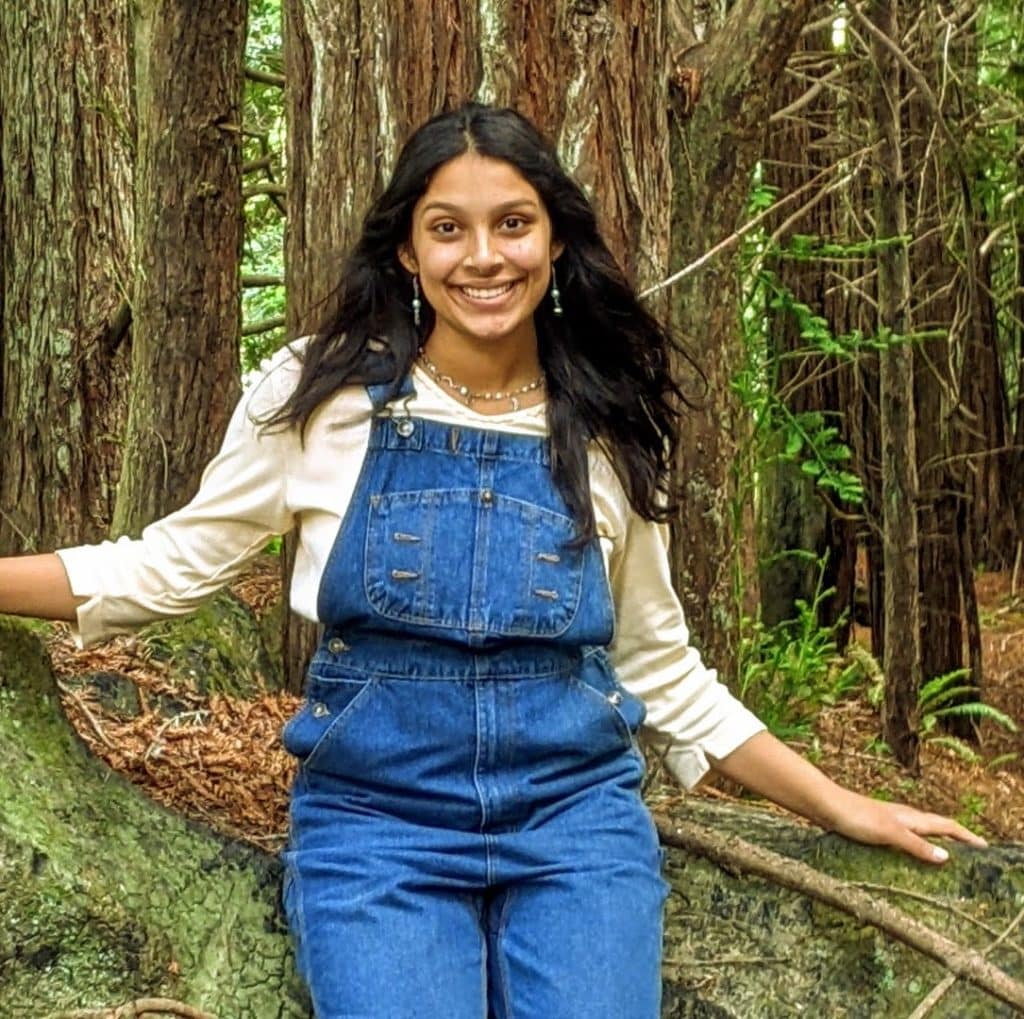
A: Climate change is the single most pressing issue facing our world today, but it’s also the most overlooked and commonly misunderstood. The readiness to accept individual blame for the state of the world today isn’t productive. It’s just an oddly reassuring safe space that tells us we are “doing all we can,” and the rest is “not our fault.” The U.S. government continues to subsidize systems that are inefficient and exploitative. Factory farming is one of those systems. As a high school student, I decided to break free from the “business as usual” model of school food by taking a few small steps with the help of my school’s cafeteria and nutrition staff, and it led to a rewarding and lasting impact.
My personal motivation for helping introduce more plant-based menu options was to provide Milpitas High School students with the opportunity to try vegan food (something other than a PB&J Uncrustable sandwich!). Our school’s lunch menu lacked diversity in all aspects, and I couldn’t believe that the same five ingredients seemingly rotated into different meals somehow met the guidelines for a balanced meal. My school is roughly 70% Asian, and we only had one Asian salad on the menu prior to featuring more plant-based options. As a result of our campaign last year, our school began dishing up Chana Masala, Edamame Fried Rice, and an Asian Edamame Salad. Having culturally familiar meals on the menu was the natural choice, since our goal was to serve the entire student body.
Q: Who did you first approach with this idea for climate-friendly, plant-based school meals?
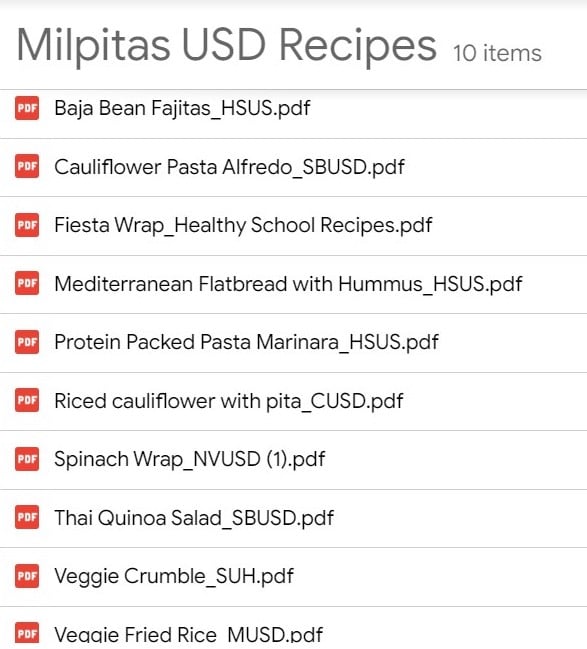
A: Reaching out to the administration in our district with plant-based options was the first step to getting the ball rolling, and this relationship proved to be one of the most positive and core foundations for our project’s success. I am so grateful that Sucheta Gehani and Sandy Huynh of the Milpitas Unified School District Nutrition Services team were already open to plant-based alternatives, seemingly waiting for Sarah and me to provide that extra student push. As a vegetarian herself, Sucheta was able to sympathize with our need for plant-based options and actively worked to source new items for the school menu, growing in passion and execution as the months went by. This campaign resulted in our district serving over 2,000 vegan lunches this past school year! Such success resulted from finding our allies among both students and the nutrition services staff.
Q: How did you roll out the climate-friendly food campaign throughout your school district?
A: We began a district-wide Earth Day campaign to educate elementary, middle and high school students about how and why choosing the plant-based option at school is important for combating climate change. We got incredible support from our cafeteria manager for the project. It was so touching to see our work posted in the various school cafeterias, being utilized as a tool for steering elementary school lunch discussions!

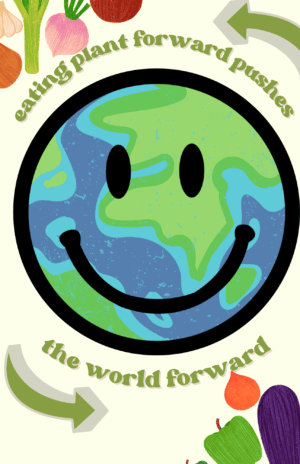
Q: How did you work with cafeteria staff to promote plant-based offerings?
A: One of our challenges was having all of the vegan food assigned to a specific corner of the cafeteria, a plant-based pitstop decked out with colorful posters we had made to advertise the new vegan lunches. This gave the impression that a plant-based meal was different from one with meat, segregated from the “real” cafeteria food. Sometimes, a brave student, who would break away from the safety of the beef taco herd to try the plant-based items, was subjected to ridicule by their friends for trying something new.
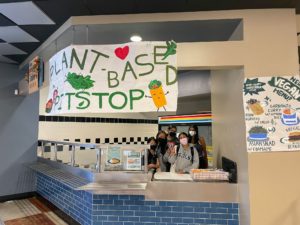
However, after giving feedback to the nutrition services staff about the placement of plant-based options in the cafeteria, we were able to integrate these options into the satellite kitchens and full cafeteria. Now, the plant-based options are served alongside the meat entrees in the lunch line. This experience shows that a high school cafeteria might need to be organized differently to support student participation in climate-friendly food options, and it’s our job to be flexible and try new things.
Q: What marketing strategies were most effective?
A: Since our cafeteria was understaffed, at lunchtime I took on the role of the lunch lady extraordinaire: volunteering to help serve up plant-based entrees while talking to students and dishing the scoop on plant power! Through this experience, I grew more connected to the plant-based menu by engaging in discussions about why it’s a great alternative. Those who may seem indifferent or wary about new plant-based options may not know the story behind factory farming and the importance of choosing plant-based meals at school.

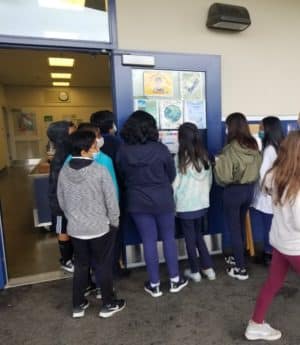
One helpful solution we found was to publicize the new menu items while also educating students; we advertised new plant-based options alongside posters with statistics and infographics that we strategically distributed throughout the cafeteria. With the help of our high school morning announcements, environmental club’s social media accounts, creative posters, and our high school’s newspaper, the messaging began reaching our fellow students, turning sneers into smiles!
Before our educational campaign during Earth Month, our high school’s skeptics of plant-based food were given the opportunity to politely voice their opinions via feedback forms. That didn’t stop them from brazenly speaking their mind, yelling across the cafeteria that they “needed their protein.” However, our infographics and posters offering statistics that refuted baseless, pro-beef claims led certain “Athletes Seeking Protein™” to become bean burrito regulars! With the help of infographics, feedback forms, morning announcements, public taste testings, and sharing your story (like we’re doing here), you can achieve wins that create lasting impact.
Q: What challenges did you experience?
A: Convincing your peers to change what they eat isn’t a walk in the park, especially in a high school cafeteria where some of the most unyielding consumers go for the beef tacos day after day. Resistance to eating more plant-based food is usually coupled with being uninformed on the nutritional and ethical values that different foods offer.
Truthfully, I felt impatient and overwhelmed many times during the project–as if the steam from the plant-based train was running out and the compartments empty where supporters should have been pouring in. But that’s part of trying to make institutional change: the cozy blanket of “I’m doing all I can” might cause you to give up when others aren’t as enthusiastic about the issue as you are. Remember that this isn’t a sign to step on the brakes, but to change routes or techniques instead, and listen and work with the people who will be affected by this change.
Q: Why should students care about climate-friendly school food?
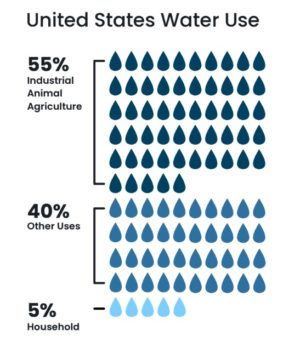
A: From an environmental standpoint, the amount of water and greenhouse gas emissions saved by choosing one plant-based meal over a meat and dairy-based entree in your cafeteria is significant. For example, the difference between the amount of water it takes to raise a quarter pound beef patty versus that of a veggie patty is about 452 gallons of freshwater, or the equivalent of 15 full bathtubs! From an ethical view, each conventional beef patty represents the cruel, inhumane practices of industrial animal agriculture. The price we pay for seemingly “cheap” industrial meats is animal cruelty. After you present students with the facts, I strongly believe that most students will take a chance on plant-based food!
Q: Any advice for other students interested in starting a climate-friendly campaign?
A: Always remember to ease into proposing your ideas. Sometimes suggestions can seem like criticism, especially for school district staff that are under-resourced and overwhelmed. I suggest prioritizing the opportunities to meet in person with district staff, since human interaction is helpful for clearer communication.
Lastly, I urge everyone to confront any fear with action. Instead of being overwhelmed by the daunting task ahead of you, celebrate the little wins. From reaching fellow students, finding plant-powered regulars, educating others, volunteering to help distribute meals, or even getting someone to try something from the plant-based menu just once – these are all wins and signs of progress!
Q: Anything else you want to share?
A: This project wasn’t possible without Friends of the Earth. Many thanks to Emma Finn, a key staff member dedicated to connecting Sarah Dosanjh and I with all the resources we needed to make our school a better place! Thank you, Sarah, for introducing me to Emma and helping me throughout this past school year. I couldn’t have asked for better mentors and friends!
Satvika Iyer is a rising high school junior in Milpitas, California. She believes that science and education can solve global issues and has applied data science to analyze genetic defects associated with neuronal migration, trained an ANN to better detect forest fires, and promoted a school wide plant-based campaign where she worked with the district on bimonthly meal plans and was an advocate for the benefits of plant-based eating. She believes in the power of policy and equity for all, working with The HFSEA’s Youth Steering Committee, FFAC, and Homegrown Bay Area in hopes of being a part of affirmative and compassionate climate action. In her free time, she loves to play volleyball and softball, spend time in nature, and work with neurodiverse individuals at her school!
